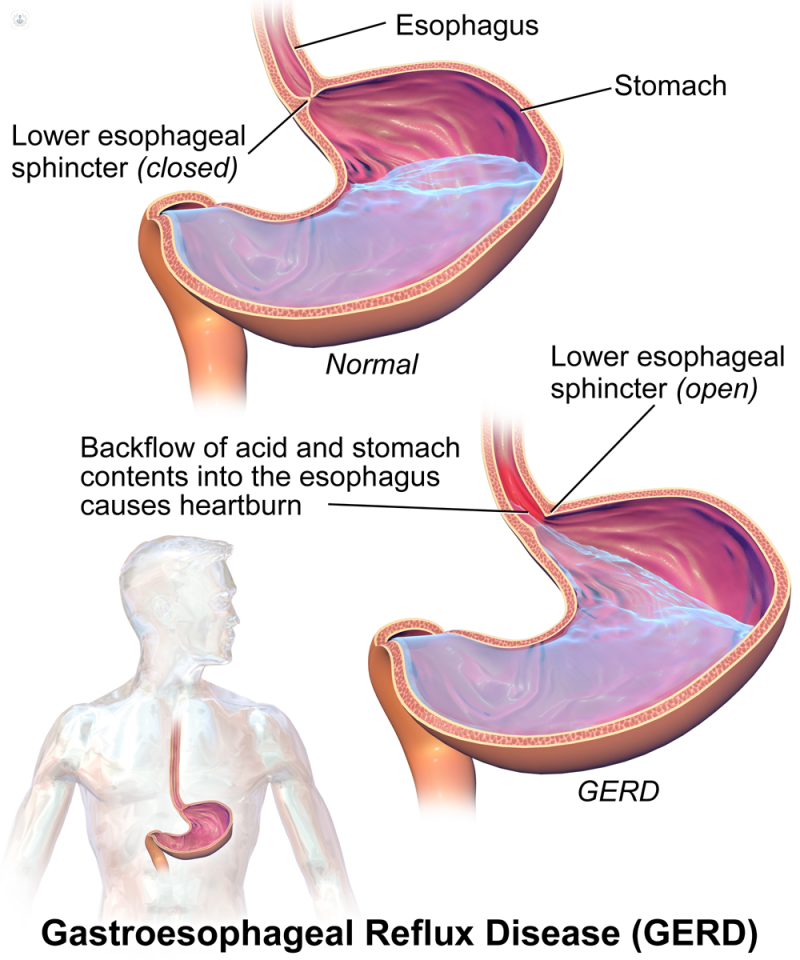Oesophageal manometry
Dr Vivek Chhaya - Gastroenterology
Created on: 11-13-2012
Updated on: 09-25-2023
Edited by: Jay Staniland
What is an oesophageal manometry?
Oesophageal manometry is a diagnostic procedure used to determine the function of the lower oesophageal sphincter. This is the valve that stops gastric acid from flowing up into the oesophagus. This is performed to diagnose problems with this stage of the digestion process.
What does the oesophageal manometry procedure involve?
This test involves introducing a thin probe into the nose (2 to 3mm in diameter) with pressure sensors within it. The probe may have a deflated balloon at the end, which is inflated by means of motion-sensitive receptors once the probe is in the desired position. The device is connected to a computer which records the detected activity. You will normally be seated for the test, but may have to lie down for part of it so that the gastroenterologist can check the pressure in various positions.
The test takes from 15 minutes to an hour. When the tube is removed from the oesophagus through the nose, the gastroenterologist may ask you to swallow so that they can see the muscular contractions of the oesophagus.

The oesophageal sphincter is a determining factor in the cause of gastroesophageal reflux and its activity is analysed during oesophageal manometry
Why is it performed?
Oesophageal manometry is performed to observe the functioning of the oesophagus and the stomach. It records the movements of the oesophagus and oesophageal sphincter in order to check their function if you have problems swallowing or have chest pain, which is the most common reason for this test. It is also currently used to measure and detect complications arising from a lack of pressure or excessive pressure in the colon (anorectal manometry) or urethra (urinary manometry).
An oesophageal manometry can be used to diagnose the following conditions:
- Achalasia – causes difficulty swallowing, with food regurgitation being common.
- Scleroderma – muscles in the oesophagus can stop moving, causing severe reflux.
It will also be used if you suffer from:
- reflux
- heartburn
- difficulty or pain when swallowing
- chest pain
Preparing for an oesophageal manometry
You should not eat or drink anything for up to eight hours before the test, and the last meal you have should be light. You must also inform the specialist about any medication you are taking, as it might interfere with the test results.
What do you feel during the test?
With oesophageal manometry, it is quite common to experience some discomfort or nausea when the tube is passed through the nose and throat. The use of topical anaesthetics is optional for people who are unable to tolerate the discomfort. You can go back to normal activities straight after the test.
Meaning of abnormal results
Abnormal results from the test may indicate a problem with the oesophageal sphincter. The main pathologies detected are:
- Gastroesophageal reflux: the oesophageal sphincter is not functioning properly. It does not act as a valve to prevent food and stomach contents from rising up into the oesophagus, irritating it and causing heartburn
- Achalasia: due to damage to the nerves of the oesophagus, the oesophageal sphincter muscle does not relax enough to allow food to pass properly from the oesophagus to the stomach.
- Oesophageal spasms: these are contractions of the muscles of the oesophageal walls that are uncoordinated, thus preventing food from reaching the stomach.


